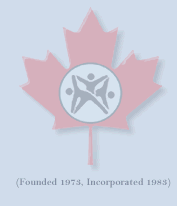


| How to run the software: |
Several data files are included with the installation software, for example, WALK.DG and LONGJUMP.DG. To run these data through the system go to the subdirectory that contains the system, e.g., C:\BIOMECH, and execute the command: BIOMECH WALK (or LONGJUMP) You will be presented with a menu of programs that can be executed. Keep in mind that the software must be excuted in a particular order as described below. First press "D" twice to view the raw data file graphically. Press "Q" to exit the graphical display program (IMAGER). Note, this program can edit your data, so be careful. Next you must execute the program, CINEDATA, to convert the data from digitizer units to real units. Press "C" to do this. Next press "K" when you have returned to the main menu to run the KINEMATICS program. After this program finishes you can view the "smoothed" data and the kinematics of the markers, segments, joint (relative) angles and total body (or partial body). The results from each program are contained in ASCII files with the extensions, .OUT. For example, the KINEMATI.OUT file contains the kinematic results. All of these files have column widths of 132 and contain "form feeds" for printing. They may be printed to a suitable printer. For instance, on an HP LaserJet III choose font 1 to obtain 132 column output. After running the KINEMATICS program, you may then execute any of the following programs:
The following programs operate on the unfiltered data files produced by CINEDATA. They may be run before or after the KINEMATICS program.
Graphing of results can be realized by the included software but this is better left to spreadsheet software, such as, Quattro Pro, Lotus 1-2-3 or Excel. After running the POWER program you may plot the powers produced by the moments of force by selecting the "J" option and entering the filenames, WALK.GRA or RUN.GRA. These files are used by the GRAPH program to describe how to graph the joint angular velocities, moments of force and power. The graphs are stored as PREVIEW0.PGL to PREVIEW9.PGL. These are HPGL files that may be imported into presentation software (PowerPoint), graphics software (CorelDRAW) or word processors (WordPerfect or Word). The files used to graph results are contained in the subdirectory, \BIOMECH\GRAPHS. |
| How to install the data files: |
To install the sample data, download the file SAMPLES.ZIP (see above) to a suitable drive dearchive the files to a suitable drive. Note, the archive is divided into many subdirectories so only provide a drive letter, e.g., D:. The archiving software, e.g., WinZip will automatical create the subdirectories. The main directory is called SAMPLES. The following activities are included in the archive:
Some data files may be run by the simulation program, SIMULATE, for example, the LONGJUMP.DG data file. This program computes the trajectories of the body markers based upon the takeoff parameters contained in the file, LONGJUMP.SIM, and the relative motions of the joints. The relative motions are produced by the KINEMATICS program and are stored in the file, LONGJUMP.DR. To change the takeoff parameters use the program, INTERACT (press "I"). Note, these programs can only be run on certain data files that use either a 10-segment model of the body (no feet or hands) or a bilaterally symmetric, 6-segment model. These data files will be under the subdirectory, DATA\SIMULATE\.... |
| Documentation and References: |
Several text files are available with the software. These may be viewed by pressing "H" and then selecting the appropriate file. Much of the theory and equations used to compute the results may be found in the following references: For kinematics (KINEMATIC program): For mechanical energy and internal work analyses (ENERGY program): For computer simulation and angular momentum analyses (SIMULATE and MOMENTUM programs): For joint and segmental power analyses (POWER program): Robertson, DGE and Winter, DA (1980) Mechanical energy generation, absorption and transfer amongst segments during walking. J. Biomechanics, 13:845-854. For kinematics, inverse dynamics, mechanical energy and power analyses (KINEMATICS, ENERGY and FORCE programs): |


